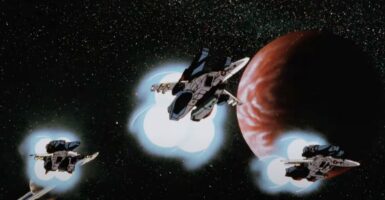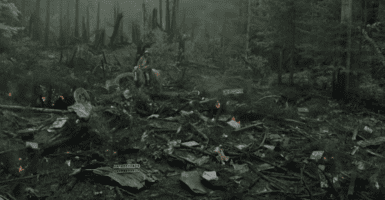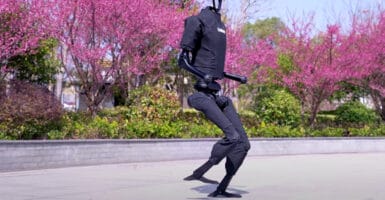Astronomy Pictures Of The Year Are Gorgeous And Humbling
This article is more than 2 years old
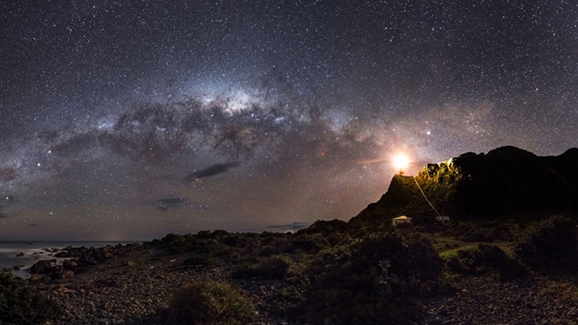 Space is just awesome and amazing and stupefying and beautiful. Since you’re currently reading GFR, I think we can all probably agree with those statements. One of the great joys of writing for this site is that I’m constantly exposed to new wonders our ambitious species has captured and dragged down into our clumsy, surface-bound existence. Sometimes it’s new discoveries which could fundamentally change our world for the better. Sometimes it’s a new science fiction story which uses the metaphor of the fantastic to comment on the day-to-day questions and crises we all have to deal with. Sometimes it’s just a freakin’ gorgeous picture of our awe-inspiring cosmos…and sometimes it’s a whole bunch of those.
Space is just awesome and amazing and stupefying and beautiful. Since you’re currently reading GFR, I think we can all probably agree with those statements. One of the great joys of writing for this site is that I’m constantly exposed to new wonders our ambitious species has captured and dragged down into our clumsy, surface-bound existence. Sometimes it’s new discoveries which could fundamentally change our world for the better. Sometimes it’s a new science fiction story which uses the metaphor of the fantastic to comment on the day-to-day questions and crises we all have to deal with. Sometimes it’s just a freakin’ gorgeous picture of our awe-inspiring cosmos…and sometimes it’s a whole bunch of those.
The Royal Observatory Greenwich’s Astronomy Photographer of the Year competition has just announced the winners of their annual competition across multiple categories, and they’re just as stunning as you might expect. The picture above, entitled “Guiding Light to the Stars,” was shot by Mark Gee of Australia, and is the “Overall Earth and Space” winner. It shows the Milky Way rising over the horizon of New Zealand’s North Island, in the hours before dawn. The bright light on the right is a lighthouse, but even with that extra light creeping in, Gee’s panoramic shot shows gorgeous detail of the heart of our galaxy, clustered together some 26,000 light years away. As Keanu Reeves has been known to say, “Woah.”
You can see the other entries in the “Earth and Space” category — which includes shots where both the sky and some part of Earth are visible — right here.

Then we move on to the “Our Solar System” category. It encompasses…well, do I even have to finish this sentence? Man-To Hui of China took the shot below, titled “Corona Composite of 2012: Australian Totality.” Here’s the official description of what we’re looking at above:
This image is a demonstration of both precision timing and rigorous post-processing. It gives the viewer a window onto the elusive outer atmosphere of the Sun – the corona. A natural dimming of the Sun’s blinding brightness, courtesy of the Moon, reveals the ghostly glow of gas that has a temperature of one million degrees Celsius. For centuries, total solar eclipses were the only way to study this hidden treasure of the Sun.
The other entries in “Our Solar System” can be seen here.
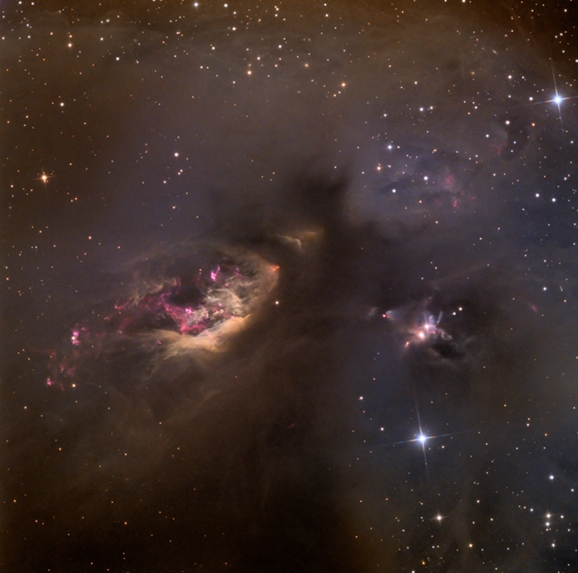
Next up is the “Deep Space” category, covering images which are of objects and regions of space far beyond our own solar system (wave at Voyager 1 on your way!). The winner above is the awkwardly named “Celestial Impasto: sh2–239.” Shot by Adam Block of the U.S.A., who describes the image’s painterly qualities like so:
Imagine the brush that could express the delicate wisps of dust and the opaque, cold, dark heart of this molecular cloud. Like a painter whose strokes leave behind a sense of motion and depth during the creation of an artwork, the star formation here seems to proceed quickly, as revealed by the rapid evaporation in the foreground. Soon even the deepest part of this cloud will yield to unstoppable forces and, as the dust is blown away, a young cluster of stars will shine.’
You can see the other “Deep Space” winners right here.

The “Young Astronomy Photographer” is open to kids under the age of 16. Fourteen-year-old Jacob Marchio of the U.S. submitted the above gorgeous look at our galaxy, with a ridiculous number of stars on display. Honestly, I tried to start counting them but I started getting dizzy and bleeding from the ears before I got very far. I’m just going to estimate that there are infinity many. Congratulations, kid, you’ve accomplished a lot more than I had by your age. The closest I came to capturing a stunning shot of stars was the time I saw Lou Ferrigno in the airport.

Finally, there are several “special prizes.” The U.K.’s Sam Cornwell won the “Sir Patrick Moore Prize for Best Newcomer” prize. His shot, “Venus Transit, Foxhunter’s Grave, Welsh Highlands,” is seen above, and it shows the tail end of Venus’ transit across the face of the Sun. You can see the silhouette of Venus on the “northeast” edge of the Sun. The next transit won’t occur until 2117, so you’ll just have to enjoy this one second-hand if you missed it in person.

Australia’s Mark Gee proves to be a double-threat, also taking home the prize for best in the “People and Space” category. His above image, “Moon Silhouettes,” captures sightseers atop Wellington, New Zealand’s Mount Victoria Lookout. The picture’s description explains:
By photographing the people on the observation deck from a great distance, the photographer has emphasized their tiny scale compared to the grandeur of our natural satellite. Close to the horizon, Earth’s turbulent atmosphere blurs and softens the Moon’s outline and filters its normal cool grey tones into a warmer, yellow glow.
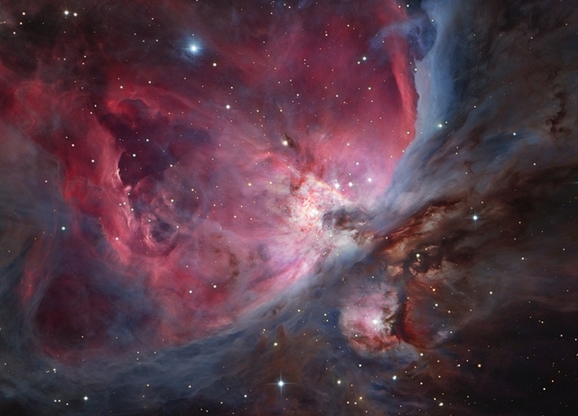
Laszlo Francsics of Hungary took the above shot, a gorgeous look at “The Trapezium Cluster and Surrounding Nebulae.” It won the top slot in the “Robotic Scope” category, which is for “photographs taken remotely using a robotic telescope. Here’s the description:
The great Orion Nebula is often described as a ‘stellar nursery’ because of the huge number of stars which are being created within its clouds of dust and glowing gas. As dense clumps of gas collapse under their own gravity, any remaining debris settles into a dark disc surrounding each newly formed star. One of these ‘protoplanetary discs’ can be seen silhouetted against the bright background of glowing gas in the central star cluster of this image. Within the disc material will condense still further, as planets, moons, asteroids and comets begin to form around the star.
You can see runner-up entries, and larger versions of the pictures, at the Royal Observatory’s website.
